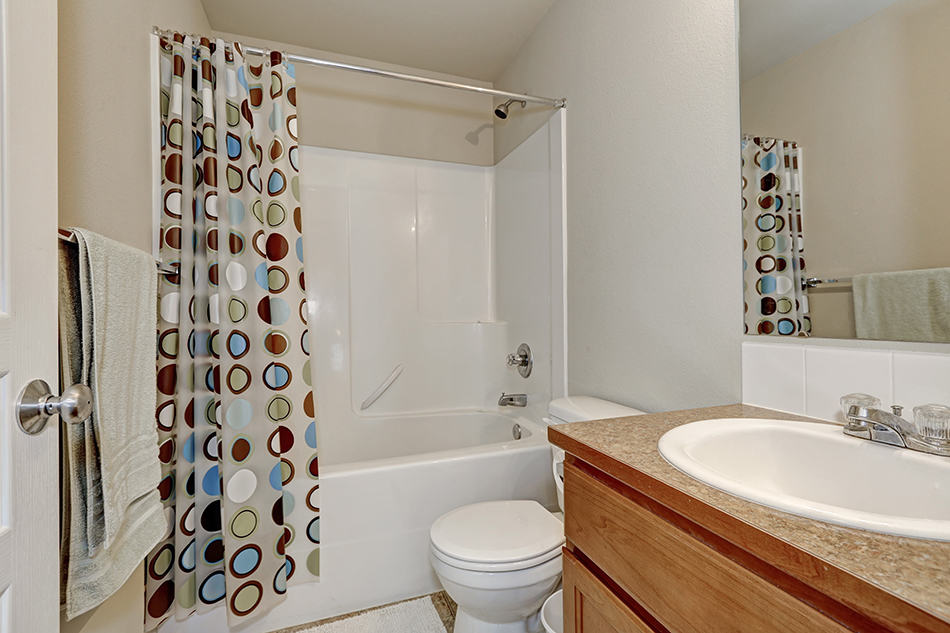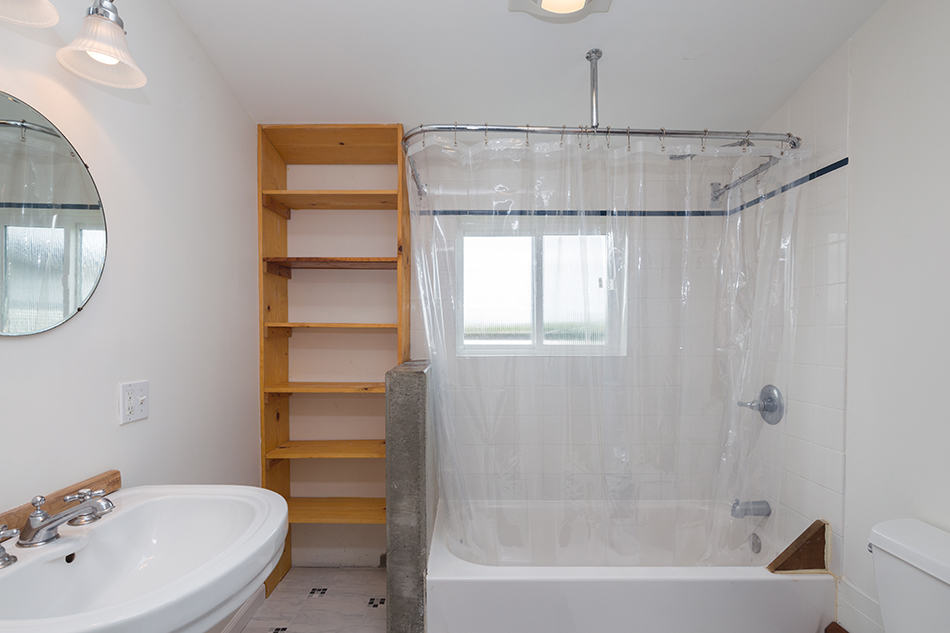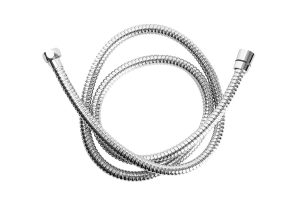Shower curtains are attractive additions that are a must-have in every bathroom. However, most curtains don’t come with a liner to protect the bathroom from excess moisture. While a shower curtain is relatively inexpensive, it doesn’t prevent mold and mildew growth.
So if you’re asking yourself, do I need a shower curtain liner? The answer is YES! A quality shower curtain liner helps preserve the life of your existing curtain – plus it is more hygienic.
If you still need convincing, we’ll explain more about why you need a shower curtain liner, the different materials available and the main differences between a shower liner and curtain. So let’s delve right in…
Advantages of Shower Curtain Liner
Protects the Shower Curtain
One of the greatest benefits of a shower curtain liner is that it protects the existing curtain hanging on the outside. The liner blocks soap and water splashes from the main curtain, thus reducing the need to replace the shower curtain often. Since shower curtains are more expensive than liners, it is important to protect them from water and dirt spills.
More Privacy
When you’re taking a shower or bathing, a liner can help create more privacy, especially if it’s made from a thick material. Some people prefer thin liners to hang on partially transparent curtains. Either way, you’ll enjoy more privacy by adding a shower curtain liner to your bathroom.
Prevents Mold and Mildew
Most shower curtain liners today are specially treated to prevent mold and mildew growth on their surfaces. In addition, these liners resist bacterial and fungal growth. All this can help reduce cleaning the liners on a regular basis. What’s more, you won’t need to clean the main curtain as often either, thus saving you money and effort.
Reduces Water Damage
The last important benefit that comes with shower curtain liners is their ability to prevent water damage. This is their main purpose as the liners stop water from seeping out of the bathtub or shower and onto the bathroom floor. In fact, they act as a second barrier to protect the walls and floor, thus reducing the amount of water damage in the bathroom.
Now that you have a better idea of the main benefits of shower curtain liners, there are several materials to choose from. To know more about their main differences in material, let’s take a closer look here:
Common Shower Curtain Liner Materials
Vinyl or PVC
PVC or vinyl shower curtains are the most effective and inexpensive out of all the other materials. However, there are some major drawbacks to these materials. PVC or vinyl come in various weights and thicknesses, with varying levels of protection. The cheaper you pay for a PVC liner, the less effective it will be, but there is also the strong chemical odor that can linger on these liners for weeks. This is because vinyl shower curtain liners emit fumes as they are made from toxic chemicals.
The Ones made from PVC also contain high levels of phthalates, which are harmful for humans. These PVC liners can cause nausea or headaches. So although vinyl or PVC are the most affordable liners, they can be detrimental to your health. Luckily, there are better material options available that are safer for you and your family’s health. Read on to learn more…
Fabric
For a softer look, enhance your bathroom’s design by opting for fabric shower curtain liner. These liners are water repellent and provide adequate protection against water spills. Fabric liners can easily be washed and reused. These liners are made from different fabrics, including nylon, cotton or polyester.
One of the drawbacks to fabric shower liners is the difficulty of keeping them clean. These liners can’t prevent mold or mildew growth plus they wear down over time so you will need to replace them more frequently.
PEVA and EVA
As a green alternative to vinyl or PVC, PEVA and EVA shower curtain liners are the eco-friendly options that contain much less VOCs. These types of liners are also chlorine free and have antimicrobial properties.
Since PEVA and EVA liners are free of chlorine, they don’t emit a terrible smell like vinyl liners. That makes them more preferable for your health as you won’t need to worry about any toxic fumes in your bathroom. Although PEVA and EVA shower curtain liners cost a little more than other materials, they are a better quality product and of course, eco friendly.
So if you’re still undecided about shower curtain liners, take a look at our comparison of these products with the standard shower curtains:
Shower Curtain Liner Vs. Shower Curtain: What is the Difference?
Liners are cheaper than standard shower curtains. They are meant to be hung to the inside of the bathtub to protect the main curtain. In addition, shower curtain liners prevent water from splashing out of the tub and onto the floor. While the cheapest liners are very thin, they are usually made from plastic and need regular cleaning to avoid mildew and mold. The more expensive options are made from fabric and vinyl and don’t require as much maintenance. These are often found in hotels and public bathrooms.
Most liners are installed to a rod using hooks or rings. They are always installed to the inside of the tub to ensure there is no space for water to splash through the liner. And since these liners prevent water from escaping the tub, you may use them on their own without a shower curtain. Perhaps their only drawback is their lack of aesthetics. This is why it is best to use them in addition to a shower curtain to improve your bathroom’s interior decor.
Unlike liners, shower curtains are meant to hang to the outside of the bathtub so that the fabric doesn’t get wet. A shower curtain is for the purpose of aesthetics as well as privacy, whereas a liner is meant to stop water from escaping the tub or shower area.
Shower curtains are made from thick materials for best privacy while you bathe or shower. They come in a wide range of designs, colors and patterns to match any decor. However, a shower curtain alone won’t protect your bathroom floor and walls from water spillage; you’ll need a liner for best protection. If you’re not so bothered about privacy, you may opt to have just a liner instead of both.
How Do I Protect My Shower Curtain Liner From Mold?
Even the most waterproof, antibacterial and mildew resistant liners are still susceptible to mold. To keep the liner clean and mold free, grab a sponge and wet it in a bleach solution. Wipe the surface from top to the bottom and dry using a clean cloth. After showering or bathing, make sure the bathroom has adequate ventilation to help speed up the drying process of the liner. It is also advisable to choose a quick drying material that’s water repellent.
You can help minimize the growth of mold in your bathroom and on your shower curtain liner by mopping the standing water after you’ve bathed or showered. Air drying your liner once a month helps give it plenty of ventilation. If your bathroom has a window or fan, open it after you’ve showered to let the steam out. If you’re going to machine wash your liner, remember to remove any rings of hooks from the liner before throwing it into the wash.
How Often Should You Clean Your Curtain Liner?
To keep your skin healthy and your shower looking its best, clean your liner at least once per week. If you notice marks or yellow streaks building up on your shower curtain liner, wash it immediately. Some liners are machine washable on gentle rinse. But if you’re pressed for time, you can always use a wet sponge to clean the liner. Just make sure you dry it thoroughly in order to prevent bacteria and mold build up.
How Often Should You Change Your Curtain Liner?
You should replace your shower curtain liner about every 6 months or so. But if your bathroom has inadequate ventilation, you may need to change your liner more often or wash it regularly to keep it mold and bacteria free.
Conclusion
By now you should have no doubt about the advantages of curtain liners as they increase the longevity of your existing shower curtain. Liners not only improve the look of your bathroom but they are also inexpensive and help reduce excess moisture. After all, a moisture-free bathroom isn’t prone to bacteria and mold growth. Just make sure you choose a good quality liner to give your bathroom a boost. An eco friendly material will be better for your health as well as protect your curtain from deteriorating. Ultimately, the decision on whether or not you need a curtain liner is down to your budget and needs, but the good news is, curtain liners are very affordable and safe for your family’s health.










